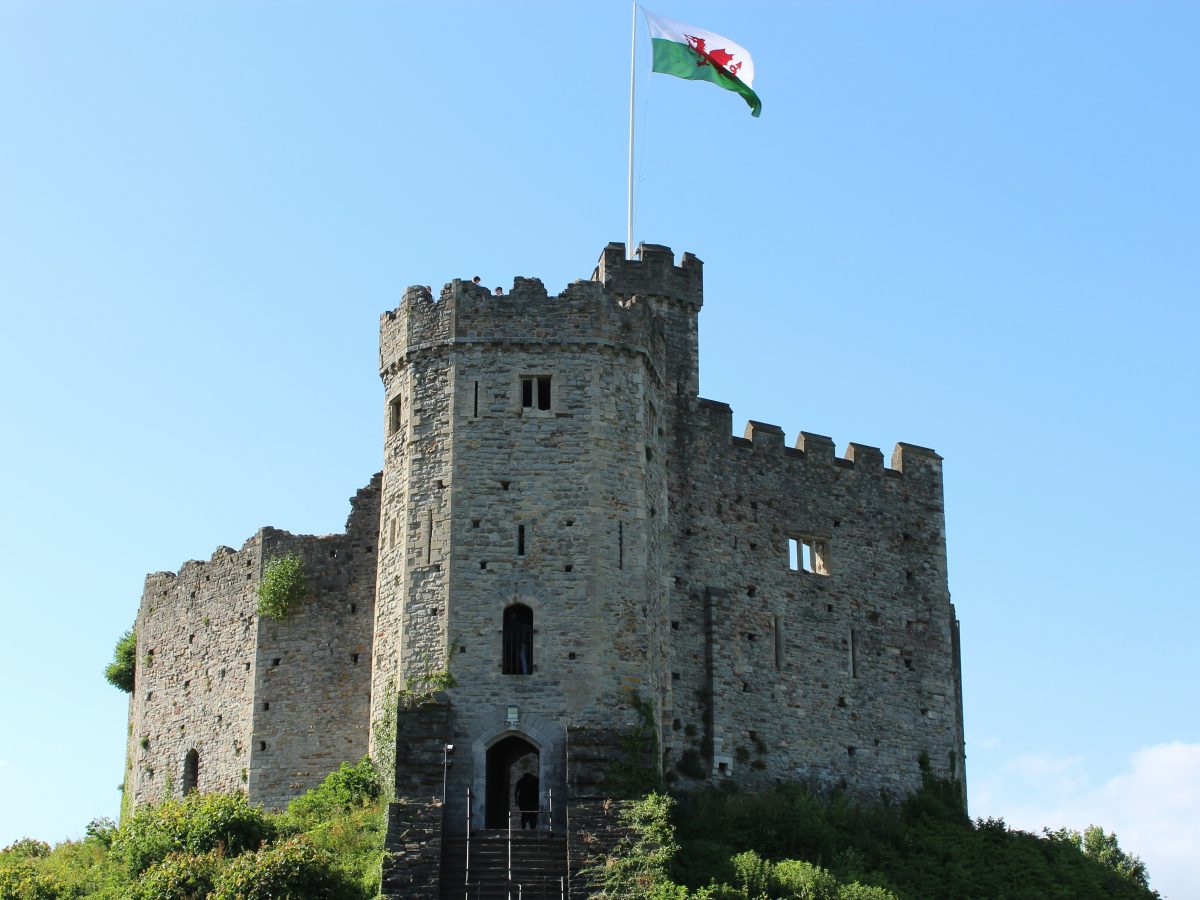𝘈𝘱𝘱𝘳𝘰𝘹 𝘳𝘦𝘢𝘥 𝘵𝘪𝘮𝘦: 14 𝘮𝘪𝘯𝘴🕒
What started back in 1992 with a five-year £304 million TV deal, now warrants a mighty £6.7 billion domestic deal for Sky and TNT.
It can only be one thing - The English Premier League (EPL).
When the English first division became the Premier League as part of the TV deal, it catapulted the league into unchartered territory. And it has only got bigger.
The game is being watched by more and more people and is more influential than ever – with stadiums always between 96.2% and 100% full.
But the audience goes much further than that. Now, the Premier League is engaged with at least once a week by 1.87 billion people worldwide.
I’m a writer at Wolfestone and a Manchester City fan, and I have spent time in Vietnam previously and joined the Da Nang Manchester City Official Supporters Club (OSC) to watch City play against Arsenal in 2023, a key game in the title race that season.
Around 50 supporters, comprising both clubs, were watching the game in a café on the side of the street at 2am local time.
I loved it, they made me feel so welcome. But it really opened my eyes to the love these supporters have for teams in the Premier League. In the early hours of a Thursday morning, they were out cheering on their team 6,126 miles away.
As a result of this increased audience like those supporters in Vietnam, the Premier League and its clubs need to localise their content to target these markets and keep them engaged.
But how does the Premier League do it?
Here are a few ways:
- Localised social media accounts
- Translated websites
- Global broadcasting
- Localised shopping experiences
- Localised fan experiences
- International player involvements
However, there is much more detail to it.
So, let’s take a deep dive into how the Premier League and its clubs keep their global audiences happy and feeling valued. In particular, we will be looking into the league’s localisation and globalisation playbook.
Social media pages
As far as we know, at the time of writing, 10 clubs (50%) have a social media page(s) on X (formerly Twitter) in more than one language. X in particular is a good focus for clubs as there is a lot of football discourse on the platform among global fans.
While researching this article, I noticed a small trend.
Around a decade ago, there were more official pages in other languages. Premier League holders Manchester City had X accounts in 12 different languages including Russian, Malay and Thai.
Since, the Chinese, Malay and Russian accounts aren’t used anymore. Instead, Manchester City opted to create an account on Russian social media platform, VK but this isn't active anymore.
It wasn’t just City who tweaked their approach. Aston Villa launched an official Indonesian X account in December 2015. But this was last posted on in August 2017. Arsenal launched an Indonesian X account ahead of their Asia tour in 2013 but this was last posted on in August 2024.
There can be a few reasons. After some time, clubs may choose not to target a certain market as much if they don’t see the desired results and therefore put less money into it – such as stop posting on a Chinese version of the account.
Alternatively, they may choose to focus on other platforms that are more used in a country such as Weibo, one of the biggest social platforms in China, and VK in Russia.
This would be part of a successful localisation strategy. Finding out where users in different markets like to spend their time online and adapting.
Also, thanks to the rise in popularity of fan accounts on social media, clubs themselves don’t have to have as many accounts.
That is because many fan accounts of the pages run translated social media pages for these football teams. For example, Arsenal fans can find a fan account in French, and Bournemouth fans can follow fan accounts for updates in Portuguese and Spanish.
Clubs can consider themselves rather lucky that fans do this for them due to their strong affiliation. However, non-clubs shouldn’t assume that the same may happen for them.
Businesses may not get the same luck, so they need to consider the success of these fan-translated social media pages in brand awareness and reach.
Liverpool, City, Manchester United and Tottenham Hotspur (Spurs) continue to run the majority of their accounts in foreign languages. Taking Liverpool as an example, they still have a lot of accounts in target markets.
"We recently set ourselves the challenge of making 2013 the year when we'd bring our fans all over the world closer to the club," explained Paul Rogers to the Liverpool website, head of international digital development at Liverpool at the time.
Another trend that my research elucidated was that the social media accounts currently run in other languages than British English usually relate to the players or managers they have or had and therefore the fanbase they have built there.
For example, Brighton’s only other men’s account in another language is in Japanese and has more than 90,000 followers.
One of their most notable players is Kaoru Mitoma, a Japanese international. Our sister-company RLI actually provides Mitoma's English language lessons. Following a win against Chelsea in February 2025, they published a 15-minute ‘Mitoma Cam’ on the page.
Clubs focus their brand where they get the best return, such as Brighton in Japan. We would recommend the same. Rather than going for every market, clubs have wisely assessed and researched what markets have potential for growth and gone for them in particular.
Further localisation strategies have included clubs getting accounts on popular social networks in other countries. City and United have an account on Kakao Story, an app similar to Instagram in South Korea.
And as for Weibo, all of the ‘big six’ clubs in the League have accounts on there.
As for the Premier League itself, it has X accounts in British English, US English, Indian and Arabic, showing they are key markets that they want to engage.
To summarise this section, smart takeaways for brands include social media platform prioritisation, focus on ROI (not just blanket social media coverage) and adaptation based on data and evolution.
Website language options
From my research on every Premier League club’s site, it appears that seven (35%) of the clubs have options to select other languages on their website.
This varies from just one language, like Tottenham Hotspur (Korean) and Leicester City (Thai), all the way to Liverpool’s nine languages and Manchester City’s 13.
The bigger clubs like City and Liverpool will naturally attract more interest from abroad so they have covered a lot of bases and identified several growth opportunities.
For clubs that have just targeted one market for their website, like Spurs and Leicester, this is also done with intent. And very wisely chosen.
For Spurs, Korea is a big market for them thanks to captain and countryman Son Heung-min. And Leicester, they are owned by Thai duty-free group King Power, so it only makes sense to target that market. Especially given the fans they gained during the title-winning campaign of 2016.
Back in 2016, football commentator Aekarach Kengtooktang was quoted in the BBC. He said: "Leicester's rise has made a strong impression on the fans. But it will take a lot more time to build up their fan base. Big teams like Manchester United or Liverpool have earned their fans in Thailand from their performances and their fame over decades. This is a historic moment in the English Premier League but it has been only two years, so we have to wait and see."
As a translation company, we could tell you to invest in translating your website into every language there is. It would benefit us.
However, what we would actually recommend is reviewing your traffic, goals, and markets and aligning them with your actions. Therefore, you can benefit from a good return on investment (ROI) from your website translation projects.
Are premier league club websites just translated or fully localised too? Well, this varies.
On one end of the scale, Crystal Palace just translated the header navigation relating to tickets, matches and news into French and Spanish.
For Villa, when I checked, their English site has a main feature with countryman Morgan Rogers whereas the Arabic and Spanish sites go straight into news. The English site also has the next fixtures and a buy ticket option within it.
And for Spurs, their English site leads with an image from the game vs City (as that was the night before I checked). On the contrary, their Korean site leads with Son regardless.
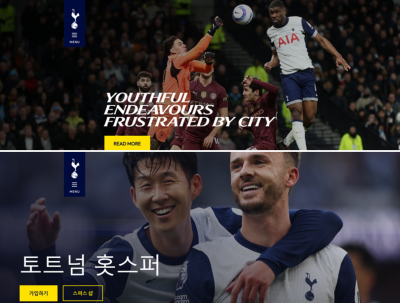
These examples from Tottenham would be a perfect example of localisation and cultural adaption.
Rather than directly translating content, they’ve clearly tailored their Korean website to resonate with a specific audience. Leading with Son, regardless of the latest match, shows an understanding of what matters most to Korean fans – their national hero.
For any organisation looking to go global, this is a brilliant reminder that smart, audience-focused localisation can deliver results.
Brands should start by reviewing your analytics: where is your traffic coming from? What markets are you trying to grow in?
Let the data guide your localisation and translation decisions, as it does Premier League clubs. Consider what markets would bring the best results and for a deeper connection, review if website localisation is the right fit for you.
Global broadcasting
The Premier League is the most-watched sports league in the world, broadcast across 189 global markets.
And, as the Premier League does with Sky Sports, TNT and Amazon Prime for the UK, the League also has deals with other broadcasters to show the Premier League in global markets.
For example, in India, the Premier League can be watched on Star Sports and Disney+ Hotstar.
In the United States, NBC provides coverage worth £2bn over six years.
International broadcasters will usually have their own commentators and produce their own localised coverage of the show. For example, former Premier League footballers from the US like Tim Howard feature on NBC’s Premier League coverage as a studio analyst.
Even within the ground, knowing that the Premier League is broadcasting to such a wide audience, you will see localised adverts.
During a weekend of Premier League football in late February 2025, I noticed advertisements in Arabic on the advertising boards at St James’ Park, the home of Newcastle United.
So, what can businesses learn from this?
It’s not just the football that’s localised; it’s the full ecosystem around it. Commentary, coverage, and even highlights can vary from market to market. Businesses should consider how the entire customer journey can be tailored to regions, beyond translation.
In the example of the US, we also see the broadcaster using US voices to foster fan trust. Likewise, brands looking to expand in new markets should consider using local ambassadors and case studies as part of their localisation playbook.
Our extra advice is that businesses should also consider media localisation. Whether it’s subtitling videos or creating multilingual voiceovers for promotional content, adapting your media to the local language increases engagement and brand authority.
Player involvements
As early as 2010, Manchester City players at the time were put through their paces with welcome messages in Arabic to celebrate the launch of a new City website in Arabic.
At the time, Victoria Stansfield, the club’s digital delivery manager, was quoted on the Manchester Evening News as saying: "As the club’s profile continues to grow in Arabic regions it is crucial we have a website which caters for our fans’ needs.
"We pride ourselves with how we engage with our fans around the world. What better way than for the players to speak to them in their native language?"
Fifteen years later, players are still used to build relations with other countries. It may be a video where players wish fans a Happy Chinese New Year. Alternatively, they may try local delicacies to celebrate a festive period too like Jack Grealish and Matheus Nunes tucking into a Chinese New Year feast.
The Chinese New Year celebration content goes a long way to making their audience in the country feel valued.
After all, in 2023, it was reported that analytics company Nielsen believed the club's match-watching, merchandise-buying fan base to sit at around 46 million in China.
"I think one of the things that we've done completely differently to everyone else is when we first established our office here (in Shanghai), we created our own digital content team, so all the content we made is done here locally," said Scott Munn in 2023, former City Football Group China CEO.
"We have a full-time Chinese staff member in Manchester, but all that content is bespoken for the market. And for us, we think that's a real point of difference.
"So, this is not just taking some footage from the UK and putting subtitles on it. This is actually having our staff tailor it — whether it's an interview from Manchester in Mandarin, or whether it's actually producing it here and then putting it out in Mandarin — it's a real advantage."
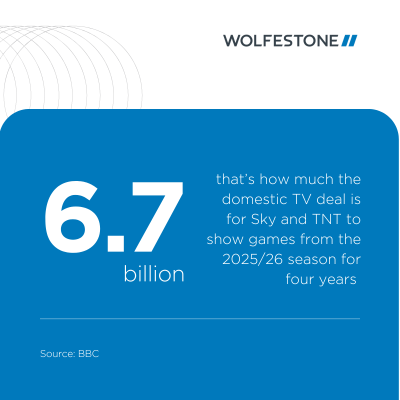
Fan events
Holding events for fans in their area helps to engage that audience even more.
Overseas markets can also be made to feel valued by meeting players. During his visit to the Superbowl in 2025, Ballon d’Or winner Rodri met up with the New Orleans OSC branch.
Events could also look like a worldwide trophy tour, as City did following their treble win in 2023. They visited 21 countries across six continents. Clubs also need to be mindful to not forget their legacy fans in their local area too.
So, City visited more than 60 OSC branches in the UK too.
However, it doesn’t just have to revolve around winning. Pre-season tours and open training sessions help to engage fans in different continents.
When Spurs travelled to South Korea for its pre-season tour ahead of the 2024/25 season, it became the fourth time the club visited the country (2005, 2017, 2022 and 2024), displaying the strength of the brand there. They also visited Japan.
A tour of that size is reportedly worth around £10m to the club through match fees, a percentage of ticket sales and merchandise.
Shopping
In both club shops in person and online, localised clothing caters to various markets.
For example, both North London clubs Arsenal and Spurs have released Year of the Dragon items for Chinese New Year. For Arsenal, this is clothing items and for Spurs, a warm-up t-shirt.
Last year, Manchester City released a Year of the Dragon kit and Chelsea sold a three-quarter zip with the Dragon design in mind.
Spurs also have lots of localised Korean items of clothing in the shop including Son flags, South Korean pin badges, hats and more.
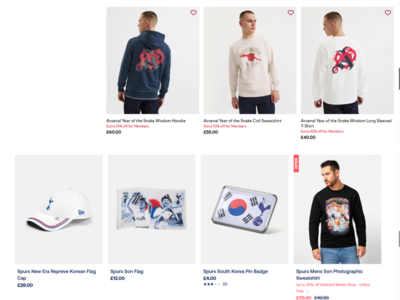
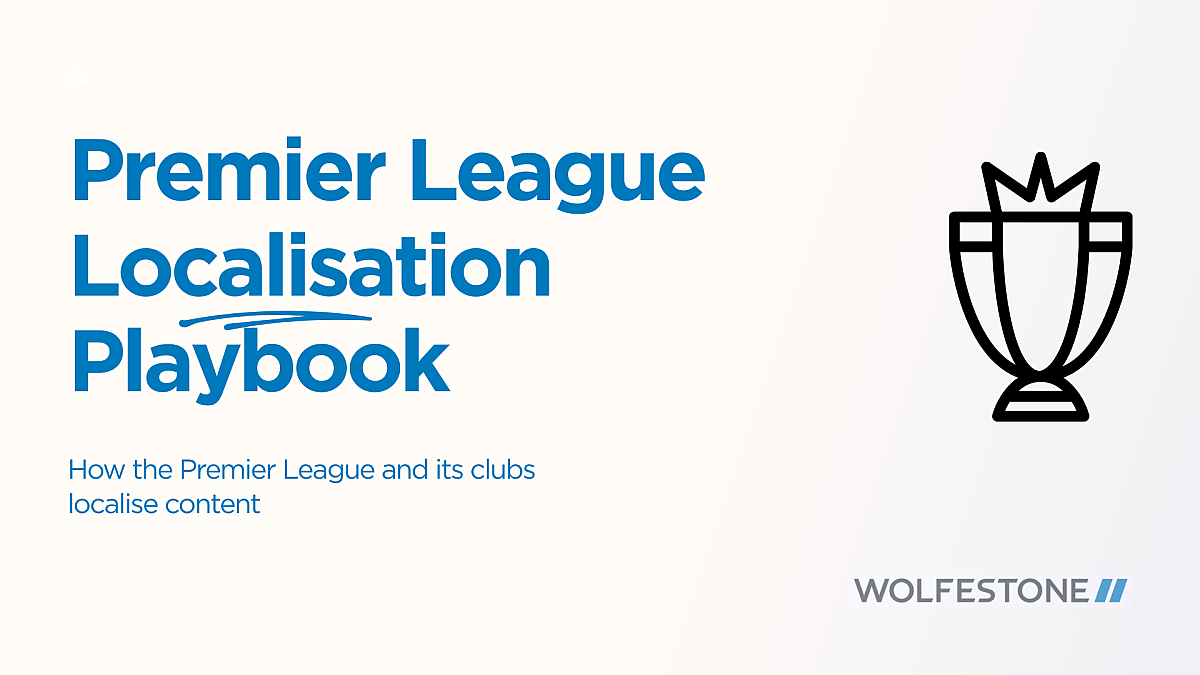
What can brands add to their localisation playbook?
Businesses should consider product variations or limited-edition items that reflect local festivals, national holidays or cultural moments, these small gestures go a long way in making international customers feel recognised. However, the key is to not be too gimmicky – ensure decisions are backed by thorough market research and translated surveys.
As an extra tip from Wolfestone, remember that pricing also needs to be localised.
What feels affordable in one region may be expensive or inaccessible in another. Adapting pricing by market, considering purchasing power and standard expectations, helps avoid friction. This applies both online and offline.
Additionally, offering local currency and regional preferred payment gateways is just as important as translating produce pages and websites. Familiarity and localised customer experiences can make or break a sale.
Signings
While localisation and appealing to new markets won’t be the top priority when making a new signing, it may be looked at as a side benefit by clubs.
People identify with people. And if they see one of their own doing well in what is commonly considered the best league in the world, it will only help the club attract new fans from that region.
Manchester United still reaps some of the benefits in Asia from their signing of Park Ji-sung in 2005. They reigned supreme for a decade in South Korea. The signing of Dong Fangzhuo helped United boom in China, and in 2020 they were still the most popular English club in the country.
However, by signing Son Heung-min in 2015 and him going on to be one of their best players and captain, Tottenham Hotspur have benefitted hugely. It has led around 12 million people - almost a quarter of the entire population of South Korea – to be Spurs fans.
And on January 1, 2025, 17-year-old South Korean winger Yang Min-hyeok joined the club. It seems that Spurs are keen to keep targeting the Korean market for years to come.
So, yes it may not be the sole reason for a signing, but I would imagine clubs will be licking their lips at the prospect of targeting such a large audience in this way.
Clubs need to find the right balance
While clubs obviously need to make a concerted effort to reach and gain new markets and territories for financial and reputational benefits, clubs need to not forget their roots while doing so.
In practice, this means not leaving legacy fans out to dry through excessive ticket prices and getting rid of traditional season tickets and concessions in some cases.
After all, local support is the reason they can now benefit from extra sponsorships, revenue and support from overseas.
I believe that clubs can still have their cake and eat it. They can still ensure local fans feel valued while catering to fans overseas and still grow financially and sustainably.
And to maximise this growth overseas, social media, websites and players all play their part.
Just as football clubs need to respect legacy fans, brands must stay true to the values, tone and vision that built their success.
With a smart localisation strategy, an effective style guide, and a managed translation glossary, it’s possible to grow globally while staying consistent across languages and staying grounded locally. Translate, localise and tailor the message, not the mission.
Choose markets where your brand resonates and where you can genuinely add value. Respect the culture, invest in translation, localisation and cultural adaption and grow at a pace that lets you maintain connection.
Conclusion
One of the craziest things about the Premier League, its growth and therefore localisation strategy, is that numbers are probably bigger than what can be reported. Take my example in Vietnam, there were 50 people or so watching one screen.
And there will be examples like this in bars, cafes and in homes all around the world.
So, it will be interesting to see how the Premier League’s clubs balance attracting new fans with making legacy fans feel valued.
Leaning too far in different ways can impact financial revenue and growth for years to come.
I would say there is a bit of a divide with how much effort clubs are putting into localisation strategies and you could infer that shows how valuable it is to them.
We have spoken about a few clubs like Manchester City, Liverpool and Spurs more than others because they are doing more. It contributes to them being second, eighth and ninth in the Deloitte Football Money League 2025. The league records the clubs that generate the highest revenue in the world.
Other clubs who don’t have as much pedigree in the league would naturally focus their efforts elsewhere.
But those who are localising the most will be reaping the benefits.
So, what are the lessons for businesses?
- Invest in translation not just for visibility but for global accessibility
- Prioritise localisation in key markets
- Build an effective style guide and translation glossary to maintain consistency across languages
- Translate and adapt your message, not your brand mission
- Make strategic choices based on market research, trends, audience data and long-term value
- Embrace media localisation, such as subtitles, voiceovers and more
- Work with local influencers or regional ambassadors to build trust
- Ensure website translation is done thoroughly
- Adapt the shopping experience, from currency and payment methods to localised pricing
Take a look at our localisation services or contact us today.
𝘑𝘢𝘤𝘬 𝘸𝘳𝘪𝘵𝘦𝘴 𝘢𝘣𝘰𝘶𝘵 𝘵𝘳𝘢𝘯𝘴𝘭𝘢𝘵𝘪𝘰𝘯, 𝘭𝘰𝘤𝘢𝘭𝘪𝘴𝘢𝘵𝘪𝘰𝘯 𝘢𝘯𝘥 𝘮𝘰𝘳𝘦 𝘭𝘢𝘯𝘨𝘶𝘢𝘨𝘦 𝘴𝘰𝘭𝘶𝘵𝘪𝘰𝘯𝘴 𝘧𝘰𝘳 𝘞𝘰𝘭𝘧𝘦𝘴𝘵𝘰𝘯𝘦. 𝘏𝘦 𝘭𝘰𝘷𝘦𝘴 𝘵𝘰 𝘧𝘪𝘯𝘥 𝘳𝘦𝘢𝘭-𝘭𝘪𝘧𝘦 𝘦𝘹𝘢𝘮𝘱𝘭𝘦𝘴 𝘰𝘧 𝘸𝘩𝘦𝘯 𝘴𝘰𝘭𝘶𝘵𝘪𝘰𝘯𝘴 𝘩𝘢𝘷𝘦 𝘢𝘯𝘥 𝘩𝘢𝘷𝘦𝘯'𝘵 𝘸𝘰𝘳𝘬𝘦𝘥 𝘵𝘰 𝘱𝘳𝘰𝘷𝘪𝘥𝘦 𝘢𝘴 𝘮𝘶𝘤𝘩 𝘳𝘦𝘭𝘢𝘵𝘢𝘣𝘭𝘦, 𝘰𝘳𝘪𝘨𝘪𝘯𝘢𝘭 𝘤𝘰𝘯𝘵𝘦𝘯𝘵 𝘵𝘰 𝘵𝘩𝘦 𝘢𝘶𝘥𝘪𝘦𝘯𝘤𝘦 𝘢𝘴 𝘱𝘰𝘴𝘴𝘪𝘣𝘭𝘦.




